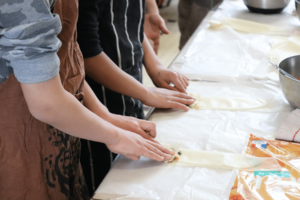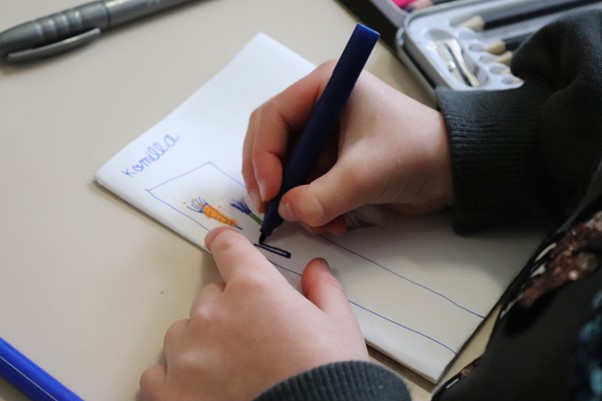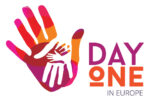Lunch Box
RECIPE EXCHANGE LEARNING EXERCISE
Activity by École Elémentaire Ferdinand Buisson de Bègles with partner organization Territoires Alimentaires. Yassir Yebba’s activity with cooking with a recipe and its relation to people’s food experience.
Educational aim: To experiment and acquire knowledge about food in the classroom and at home.
1) In class:
– Make a simple recipe. We focus on the story of the recipe, using drawings to explain the steps, involving the children in “what do I do now, what do I do next”. By translating the whole recipe using drawings and key terms, the children memorize the whole recipe, which then makes it easier to prepare. Here, the children worked in 2 groups to make vegetable and cheese bricks. One group: I draw/photograph my friends and observe. Another group: I cook, carrying out all the stages (washing, scraping, cutting, folding, tasting). Then reverse.
– Duration: 2/3 I do – 1/3 I talk about the workshop.
2) At home:
– Observe and recount a recipe, or even reproduce it with your parents. The question of translation arises I can share what I’m doing even if it’s in another language. Children use what they do at school as a basis for what they do at home.
3) At the market:
– This allows them to experiment outside school and reinforces their skills and self-confidence (I can recognize products I’ve already used, I’m curious to discover others, I ask the shopkeeper questions, etc.). The non-school setting is closer to everyday life. And it encourages them to interact.
 Other possible variations: we can work around the canteen menu (read it, understand it and draw it) and share it with the rest of the class or other school friends. You can buy the products at the market and then make the recipe. The group must agree on the products, on what they can produce together, they can try out new things, and products they don’t know.
Other possible variations: we can work around the canteen menu (read it, understand it and draw it) and share it with the rest of the class or other school friends. You can buy the products at the market and then make the recipe. The group must agree on the products, on what they can produce together, they can try out new things, and products they don’t know.
For migrant children who speak other languages, the workshops were built around two major themes: storytelling and interaction. To encourage and support the former and to stimulate and encourage the latter.
 As a researcher in the anthropology of food, my work/interest is broadly concerned with the idea of reintroducing Man into Nature and has therefore invested heavily in the field of Man/Nature interaction. It initially began with my experience in urban policy, where I was able to grasp the extent to which under-exposure to Nature explained many situations of difficulty or failure. The lack of nature syndrome is my starting point.
As a researcher in the anthropology of food, my work/interest is broadly concerned with the idea of reintroducing Man into Nature and has therefore invested heavily in the field of Man/Nature interaction. It initially began with my experience in urban policy, where I was able to grasp the extent to which under-exposure to Nature explained many situations of difficulty or failure. The lack of nature syndrome is my starting point.
So I followed two parallel paths: understanding the links between landscape and storytelling.
These were the two threads I drew on to support the children and the teaching teams.
In concrete terms, I was able to offer various workshops based around food and travel and to understand how this could support and encourage children and teachers to observe and produce. In this way, the recipes interacted with the cartography and produced maps.
It was important to have a discussion at the end of the workshop, to see how they felt about what they had done in class. The children were less self-centred and more willing to listen (because it was interesting to see that the same situation was experienced differently by others). This provokes discussions between them.
Yes, we made some changes: we had to regulate the discussions to allow everyone to express themselves freely. For example, the eldest sibling was always rephrasing what his younger brother was saying. Hence the need to set up small groups to break down power struggles. The mixed groups enabled us to confront other ways of thinking.
We find that through drawing and cooking, we can combine words with actions. We create, we have fun, we adapt when we can’t, we help each other… And then, withdrawing, we overcome the language barrier. It puts the question of expression on a different footing. The tasting phase is also important because words take on meaning through action. You need to have a dynamic approach because there’s frustration in not speaking the language, so by showing through gesture, you show that you’ve understood things. There’s less of an urgency to talk about it.



